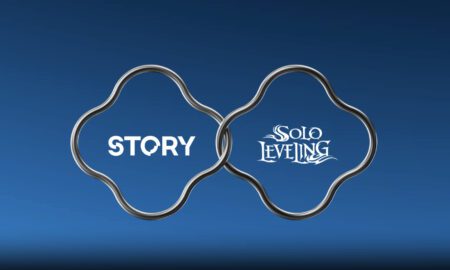Introduction
Managing property in New York City comes with a unique set of challenges. With its strict regulatory landscape, multiple oversight agencies, and constant inspections, property owners, managers, and developers must be more vigilant than ever. Even a single overlooked violation can result in project delays, expensive fines, and strained relationships with tenants or city officials. This is especially true for urgent matters such as DOB stop work order alerts, which can instantly halt all activity on a construction site. To prevent such disruptions, real-time communication has become essential. As digital tools evolve, an NYC violation alert system that sends updates through convenient channels like email and WhatsApp is becoming the modern-day watchdog that property stakeholders can rely on.
How NYC Enforces Compliance Through Violations and Stop Work Orders
The enforcement of building regulations in New York City is carried out by several key agencies, including the Department of Buildings (DOB), Housing Preservation and Development (HPD), and the Fire Department of New York (FDNY). Among the various types of enforcement actions these agencies can take, DOB stop work orders are among the most serious. These are typically issued for dangerous conditions, unauthorized work, or failure to correct previous violations. When issued, all work on the site must cease immediately, potentially delaying the project indefinitely. These orders, along with other violations, are usually posted to official databases. However, unless monitored continuously, stakeholders may not become aware of them in a timely manner. That is why implementing a robust NYC violation alert system is crucial for anyone operating within the city’s property landscape.
The Problem with Traditional Notification Methods
Traditionally, property managers and developers had to manually check city agency portals to discover new violations or stop work orders. This involved navigating complex websites, downloading spreadsheets, and interpreting cryptic codes and legal jargon. In many cases, by the time a manager becomes aware of a violation, the deadline for correction is already approaching or has passed. Paper notices might get lost, delayed in mailrooms, or misplaced entirely. Worse still, when managing multiple properties or job sites, it becomes nearly impossible to monitor everything manually. This reactive approach exposes property owners to unnecessary risk and operational disruption. The solution lies in a smarter, more agile system that can provide automatic updates as soon as something changes.
Introducing the Power of Real-Time Alerts via Email and WhatsApp
Modern NYC violation alert systems now offer real-time notifications delivered directly to the communication channels you use most—email and WhatsApp. With these tools, you no longer need to refresh city databases or worry about missing critical updates. The system continuously scans public records and agency databases for changes relevant to your properties. When a new violation is filed, a stop work order is issued, or an inspection report is updated, you receive an instant alert. Email alerts ensure that you have a permanent, searchable record, while WhatsApp notifications give you the flexibility to respond immediately from your phone. Whether you’re on-site or in a meeting, your violation watchdog keeps you informed 24/7.
Why WhatsApp and Email Are Game-Changers for Compliance
The integration of WhatsApp and email into NYC violation alert systems has fundamentally changed the game. Unlike traditional alerts that might go unnoticed in proprietary apps or get buried in spam folders, these platforms ensure visibility and quick action. WhatsApp, in particular, is widely used by teams in the field—contractors, superintendents, and building managers—making it an ideal medium for instant coordination. When DOB stop work order alerts comes through WhatsApp, a project manager can immediately contact the site team, halt operations, and begin investigating the issue. Email, on the other hand, is perfect for record-keeping, forwarding to legal counsel, or scheduling follow-ups. Together, these channels allow seamless communication and quick decision-making, which is critical when every minute counts.
Proactive Compliance Across Multiple Agencies
One of the biggest advantages of modern alert systems is the ability to track activity across various NYC agencies, not just the DOB. In addition to DOB stop work orders, alerts can include violations from HPD for housing maintenance issues, FDNY citations for fire safety lapses, and even DEP notices related to environmental hazards. For large property owners or management firms with diverse portfolios, this level of coverage is invaluable. It ensures that you are never caught off guard by a surprise inspection or fine. Instead of being reactive, you become proactive—addressing issues the moment they arise, staying ahead of deadlines, and documenting every step toward resolution.
Streamlining Response and Remediation Efforts
Once an alert is received, the next step is action. A good NYC violation alert system doesn’t just notify you; it also equips you with tools to manage the issue. Many platforms allow you to assign tasks, upload supporting documents, and update statuses—all within a centralized dashboard. When a DOB stop work order is issued, for example, you can immediately log the violation, review the inspector’s notes, and begin coordinating with architects, engineers, or legal professionals to resolve the matter. You can even set up workflows to automatically notify the right team members or schedule reminder emails to ensure that no deadlines are missed. This kind of efficiency helps reduce downtime and keeps your projects moving forward.
Choosing the Right Violation Alert System for Your Needs
Not all alert systems are created equal, and selecting the right one is essential to ensuring you get the maximum benefit. Look for a system that covers a wide range of NYC agencies, supports real-time notifications, and offers integration with your existing tools. The ability to receive alerts via both email and WhatsApp is a major plus, as it allows for greater flexibility and team coordination. Other features to consider include historical violation tracking, customizable reporting, and role-based access controls. Ultimately, the right system will serve as an extension of your team—your watchdog that never sleeps, keeping an eye on all your properties and job sites.
Conclusion
In the dynamic and highly regulated world of New York City real estate, staying compliant is not just about checking a box—it’s about protecting your time, money, and reputation. With so many agencies involved and the potential for serious consequences, relying on traditional notification methods is no longer enough. Real-time alerts delivered via email and WhatsApp empower you to take immediate action, streamline compliance workflows, and minimize disruption. Whether it’s a minor housing complaint or a major DOB stop work order, being the first to know means being the first to act. By adopting a smart NYC violation alert system, you are putting a powerful tool in your pocket—one that keeps you informed, prepared, and always one step ahead.



































